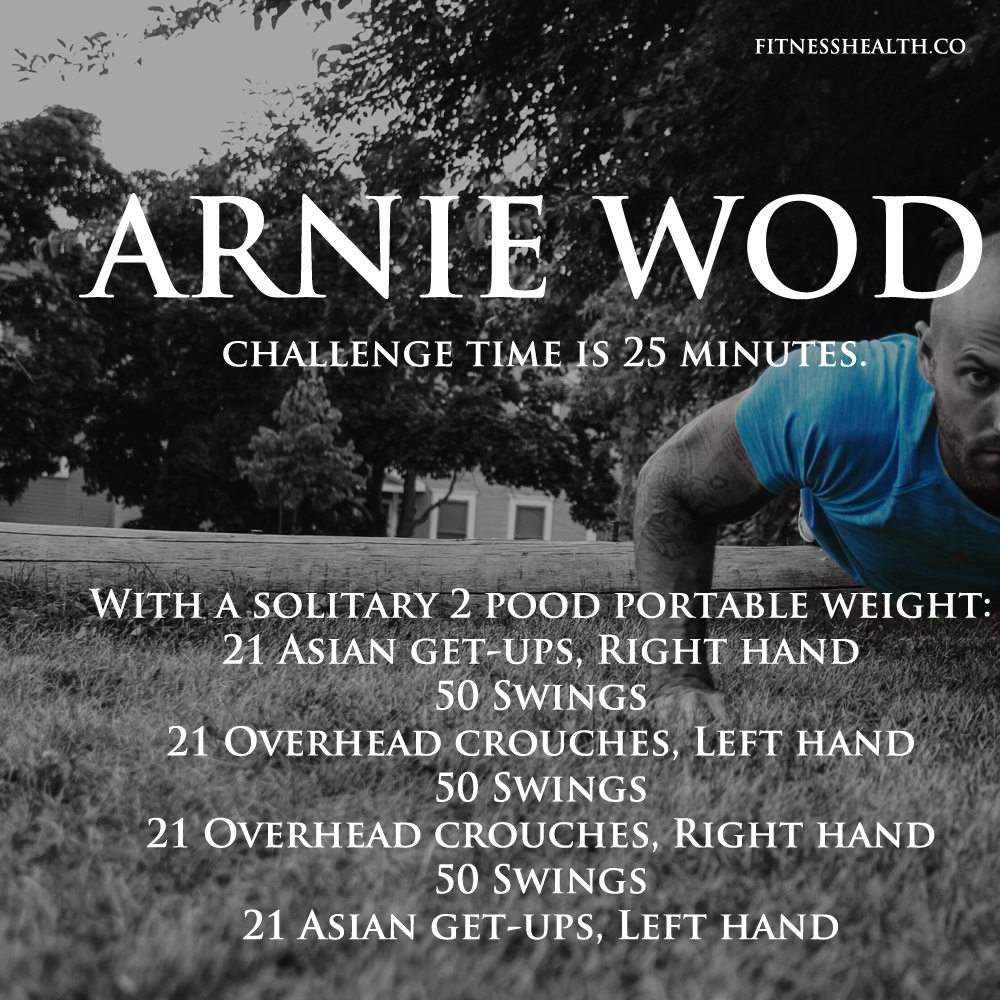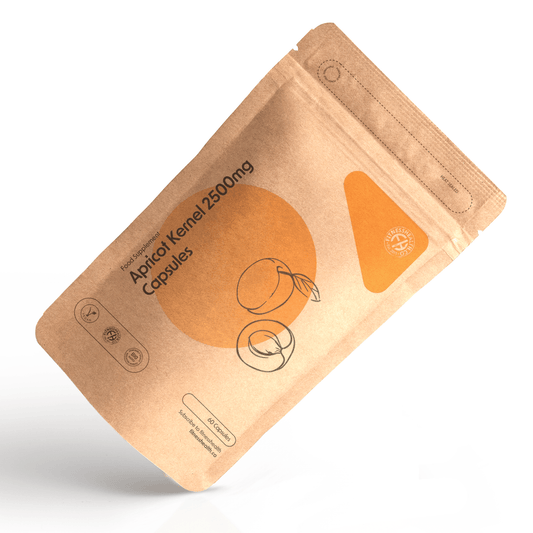The dumbbells are used to do various exercises, including weight cardio and strength training. We'll talk about a specific use of the dumbbell to train cardiovascular muscles. If you want to burn weight and lose weight, you can try dumbbell exercises. Dumbbell exercises are not only effective for building strength and muscle mass but also offer significant benefits for cardiovascular health and weight loss. By incorporating movements that elevate the heart rate and engage multiple muscle groups simultaneously, dumbbell exercises can provide a high-intensity cardiovascular workout.
For instance, exercises like dumbbell thrusters, which combine a squat with an overhead press, effectively work the lower and upper body while challenging the cardiovascular system. Similarly, dumbbell swings and snatches are dynamic, explosive movements that can increase heart rate, promoting improved cardiovascular endurance and aiding in fat loss.
Another advantage of using dumbbells for cardiovascular workouts is the added resistance they provide. This resistance increases the effort required for each movement, leading to higher energy expenditure and, consequently, more calories burned. This makes them an excellent tool for those looking to improve cardio and to enhance their weight loss efforts.
Furthermore, the versatility of dumbbells allows for a wide range of exercises that can be modified to suit different fitness levels and goals. Whether it's through circuit training, where you move quickly between different exercises with minimal rest, or through incorporating dumbbells into traditional aerobic exercises like lunges and steps, the potential for varied and effective dumbbell workouts is vast.
In summary, dumbbells are a highly adaptable and efficient tool for not only strength training but also for improving cardiovascular health and aiding in weight loss. By integrating dumbbell exercises into your workout routine, you can enjoy a comprehensive approach to fitness that combines the strength training, endurance, and cardiovascular benefits.
Should You Do Cardio First Or Strength Training?
Again, that's dependent upon personal trainer and upon the individual fitness plan or goals. Lift weight and then increase your endurance for a stronger workout. For marathon running and cardio-training events the priority has to be cardiovascular. Alternately, it may be possible to combine a workout in ten minutes with an exercise class. I created these free home training plans so I didn't take any guesses. In my personal trainer in order to improve muscle development I use a variety of techniques including split training.
Absolutely, tailoring your fitness routine to align with your specific goals and preferences is crucial. If you're focused on building strength and muscle, incorporating weight lifting into your routine is key. You can start with lighter weights and gradually increase them as you further build muscle endurance and strength. This method ensures a balanced approach that enhances muscle development without overexertion.
On the other hand, if you're preparing for serious endurance sports events like marathons, your training should emphasize cardiovascular exercises. These could include long-distance running, cycling, or swimming, which are essential for building the stamina and endurance needed for such demanding events.
However, it's also entirely possible to design efficient, time-saving workouts that combine strength and cardio. For instance, a 10-minute high-intensity interval training (HIIT) session can be incredibly effective. This could involve short bursts of intense activity, like sprinting or kettlebell swings, followed by brief rest periods. These sessions are not only time-efficient but also boost both cardiovascular health and muscular strength.
The home training plans you've created are a great example of taking control of your fitness journey. By eliminating guesswork and providing structured routines, they can significantly aid in achieving specific fitness goals. The use of various techniques, like split training, where you focus on different muscle groups on different days, is an excellent strategy for muscle development. This approach allows for targeted training and adequate recovery time for each muscle group, leading to more effective and sustainable muscle growth.
In summary, whether it’s building endurance for a marathon, enhancing cardiovascular health, or improving muscle strength, the key is to choose a workout regimen that aligns with your individual goals. Combining different types of training and varying your techniques can lead to a more balanced and comprehensive fitness plan.
Cardio Myths
Cardio is a popular mythical activity for people. It's going on. Indeed, the cardio versus weights debate has been a longstanding topic in the fitness world, often mired in myths and misconceptions. Many people believe that cardio is the ultimate way to lose weight, while others swear by weight training. The truth lies somewhere in between, and understanding the nuances is key to a balanced approach.
Cardiovascular exercise, commonly known as cardio, is any activity that raises your heart rate and keeps it elevated for a period of time. Examples include running, cycling, swimming, and brisk walking. It's widely recognized as one of the most effective ways to burn calories and improve heart health. For those looking to lose weight, especially to shed fat, incorporating regular, cardio exercise sessions can be very beneficial. It helps create a calorie deficit, which is essential for weight loss.
However, the myth that cardio is the only way to lose weight is not entirely accurate. Weight training also plays a crucial role in a well-rounded fitness regimen. While it might not burn as many calories as a high-intensity cardio session, it builds muscle. The increase in muscle mass increases your resting metabolic rate, meaning you burn more calories even when you're not exercising.
In this article, we'll dispel some common myths about both cardio workouts and weights. We’ll delve into the basics of a balanced cardio workout, outlining how to incorporate it effectively into your fitness routine. We'll discuss the importance of varying your workout intensity, duration, and type to prevent plateauing and keep your workouts interesting and effective.
Moreover, we'll explore the synergistic effect of combining weight training and cardio with strength training. This combination not only aids in more efficient weight and fat loss but also ensures better overall fitness, improving both cardiovascular health and muscular strength.
In essence, the key to a successful fitness journey isn't about choosing between cardio and weights; it's about understanding how to effectively integrate both into your routine for a balanced, healthy, and sustainable approach to fitness.

Benefits for Weight Loss
Training with weights burns calories like exercise. Typically, your body will burn lower amounts of fat during the weightlifting session if you are doing cardio or running. Resistance exercises also help people in weight loss by helping them achieve their goals. Muscle is more metabolically regulated than fat, so having more muscle helps increase the restful metabolic rate. But there are no major differences. It is even higher than the prevailing forecast that a few calories per pound of muscle will increase. It does help and doesn't change anything.
Worth pointing out that weight training, much like your cardio workouts, is a valuable component of a fitness routine that contributes to calorie burning. While it's true that during a weightlifting session, your body may not burn as much fat as it would burn fat as during a cardio workout, the benefits of resistance training extend far beyond the workout itself.
One of the key advantages of resistance exercises, as you mentioned, is their role in aiding weight loss. This is achieved not just through the calories burnt during the exercise, but also by building muscle mass. Muscle tissue is indeed more metabolically active than fat tissue. This means that the more muscle you have, the higher your resting metabolic rate will be. In simpler terms, you burn more calories even when you're not actively working out.
However, it's important to temper expectations regarding the extent of this effect. While having more muscle does increase your resting metabolic rate, the increase isn't as significant as some might expect. The often-cited claim that each pound of muscle burns a huge number of calories per day at rest is an exaggeration. The increase is there, but it's more modest.
Still, this shouldn't detract from the value of incorporating resistance training into your routine. Building muscle not only helps with metabolism but also strengthens bones, improves balance and coordination, and enhances overall physical strength, making daily activities easier.
In essence, while weight training might not burn as many calories as cardio at the moment, its long-term benefits for metabolism, strength, and overall health are undeniable. It's a crucial component of a well-rounded fitness regimen, complementing cardio and other forms of exercise. By understanding and leveraging the unique benefits of both cardio and weight training, you can create a more effective and holistic approach to fitness and weight management

Recommended Dumbbell Workouts
A simple and effective circuit workout will help you achieve your fitness targets. Circuit training is known for its ability to combine strength and cardio elements, making it an excellent choice for those looking to enhance overall fitness.
Starting strength workouts with five targeted dumbbell exercises for the upper body is a smart move. You could include exercises like bicep curls, tricep extensions, shoulder presses, dumbbell rows, and chest presses. These exercises will engage different muscle groups in your upper body, ensuring a comprehensive workout.
Setting your timer for an hour and dedicating at least one minute to each exercise is an effective way to maintain intensity and focus. This one-minute-on, five-minutes-off pattern allows for a high-intensity burst of intense exercise, followed by a short rest period, which is great for building endurance and strength while also keeping your heart rate up.
After completing each of the ten exercises, you have the option to enhance the cardiovascular aspect of your cardio workout with weights afterwards. If you feel up for the challenge, repeating the circuit for another two sets will not only increase the workout’s intensity but also significantly boost your endurance and stamina.
It's important to listen to your body during such workouts. While pushing yourself can lead to gains in fitness, it's also crucial to ensure you're not overexerting to the point of injury. Remember to stay hydrated, maintain proper form throughout each exercise, and take longer breaks if needed.
In summary, your approach to circuit and strength training workouts with a focus on upper-body dumbbell exercises is an excellent strategy for achieving a mix of cardio and strength training and cardiovascular benefits. This kind of workout is adaptable, challenging, and can be incredibly rewarding in terms of reaching your fitness goals.

Examples of HIIT Workouts with Weights
Integrating High-Intensity Interval Training (HIIT) with strength-focused methods like AMRAP (As Many Reps As Possible) and Tabata can indeed create a dynamic and effective workout experience. These methods add variety and intensity to your fitness routine, making them great for those who want to challenge themselves and see tangible results.
Let's break down how you can incorporate these methods:
1. EMOM (Every Minute on the Minute) with Barbell Workouts: This approach is about performing a set number of reps of a particular exercise at the start of each minute, and then resting for the remainder of that minute. For example, you could do 11 Romanian deadlifts in the first minute, 12 front squats in the second minute, and 12 bent-over rows in the third minute. This cycle is repeated for a set duration, say 15 or 20 minutes. EMOM workouts are great for building strength and endurance, as they require you to maintain a consistent level of effort over an extended period.
2. AMRAP (As Many Reps As Possible): This is about doing as many repetitions of a set of exercises as possible within a given time frame. For instance, you might choose a 10-minute AMRAP workout where you cycle through a series of barbell exercises like squats, presses, and rows, doing as many reps as you can manage without compromising on form. AMRAP workouts are excellent for testing and improving your strength and cardiovascular endurance.
3. Tabata: This is a specific type of HIIT workout involving 20 seconds of intense effort followed by 10 seconds of rest, repeated eight times for a total of four minutes. You can apply Tabata to a variety of exercises, including those with a barbell. For example, you might do a Tabata round with barbell squats, where you perform squats for 20 seconds, rest for 10 seconds, and repeat. Tabata is particularly effective for improving cardiovascular fitness and burning calories.
When incorporating these methods into your workout routine, remember to start at a level that's appropriate for your current fitness level and to gradually increase the intensity. It's also important to maintain proper form throughout the exercises to avoid injury. These methods, while challenging, can be incredibly rewarding and can significantly boost both your strength and cardiovascular fitness.

Benefits of Compound Exercises
Compound exercise allows for faster bodywork than isolation exercises. It also allows you to lift heavy weights to accelerate strength gain.

Staggered Deadlift + Reverse Lunge
Targets: Legs, glutes. What are the steps in completing a Staggered Romanian Deathlift? Reverse lunge:
The Staggered Deadlift combined with a Reverse Lunge is a compound exercise that targets multiple muscle groups, including the glutes, hamstrings, quadriceps, lower back, and core. This exercise effectively blends the benefits of a deadlift with the functional movement of a lunge, offering a comprehensive lower-body workout. Here’s how to perform it correctly:
1. Starting Position:
- Stand with your feet hip-width apart, holding a dumbbell in each hand by your sides.
- Stagger your stance by stepping one foot slightly back, about half a step. The heel of your back foot should be raised, with the weight primarily on the ball of the foot.
2. Staggered Deadlift:
- Hinge at your hips and slightly bend your knees as you lower the dumbbells towards the ground.
- Keep your back flat and your core engaged throughout the movement. The focus should be on feeling a stretch in the hamstrings of your front leg.
- Lower the back by lifting weights but only as far as you can maintain a flat back. Avoid rounding your spine.
- Drive through the heel of your front foot to return to the starting position.
3. Transition to Reverse Lunge:
- After completing the deadlift, stabilize yourself on your front leg.
- Now, step back with your front foot and lower into a reverse lunge. Your back knee should come close to touching the ground.
- Ensure your front knee is aligned with your feet hip-width ankle and does not extend past your toes.
4. Reverse Lunge:
- In the lunge position, both knees should be about shoulder width apart at a 90-degree angle.
- Keep your upper body upright and your core engaged.
- Push through the heel of your front foot to return to the staggered stance.
5. Repeat:
- Repeat the staggered deadlift followed by the reverse lunge for the desired number of reps.
- Ensure to switch the staggered stance to work both legs evenly.
Technique Tips:
- Maintain a controlled tempo throughout the exercise. Avoid rushing the movements, especially during the deadlift portion.
- Keep your knees slightly bent, shoulders back, knees slightly bent and chest up to ensure a strong, stable posture.
- Breathe out as you stand up from the deadlift and as you come up from the lunge.
- Start with lighter weights to perfect your form before increasing the load.
This exercise is excellent for developing lower body strength and balance. It also requires a good amount of coordination and core stability, making it a challenging yet beneficial addition to a lower body strength workout or routine.

Dumbbell Burpee Deadlift
Target areas: Lower back, hip muscles, glutes, hamstrings, knees, calves. How to Do Dumbbell Burpee Deadlift? You may perform burpees from an inclined place if you place your hand in your chair.
The Dumbbell Burpee Deadlift is a dynamic, compound exercise that combines the intensity of a burpee with the strength focus of a deadlift. This exercise works multiple muscle groups including the legs, back, core, and arms, and is excellent for building strength, endurance, and coordination. Here's how to perform it correctly:
1. Starting Position:
- Stand with your feet shoulder-width apart, holding a dumbbell in each hand on your sides.
- Your palms should be facing your body, and the dumbbells should be aligned with your feet.
2. The Burpee:
- Begin the burpee by squatting down and placing the dumbbells on the floor in front of you.
- Jump your feet back so you're in a push-up position, with your hands still gripping the dumbbells.
- Ensure your body forms a straight line from head to heels, engaging your core and glutes to maintain stability.
- Optionally, you can add a push-up at this stage for an extra challenge.
3. The Jump Back:
- Jump your feet back towards the dumbbells, landing in a squat position, ready for the deadlift part of the movement.
4. The Deadlift:
- From the squat position, drive through your heels to stand up, lifting the dumbbells by extending your hips and knees.
- Keep your back straight and chest up as you rise, ensuring that the power comes from your legs and hips, not your back.
- At the top of the movement, you should be standing tall with the dumbbells at your sides.
5. Return and Repeat:
- Lower the dumbbells back to the ground in a controlled manner, returning to the squat position to begin the next burpee.
- Repeat the sequence for the desired number of repetitions.
Technique Tips:
- It's crucial to maintain proper form throughout the exercise to prevent injury, especially during the deadlift portion.
- Keep your back straight and avoid rounding it during the deadlift; this ensures that your lower back isn’t unduly stressed.
- Engage your core throughout the movement to stabilize your spine.
- Breathe consistently, exhaling as you lift and inhaling as you lower the weights.
- Start with lighter dumbbells to master the technique before progressing to heavier weights.
This exercise is particularly effective for those looking to increase their heart rate and build strength simultaneously. It's great for a full-body workout and can be included in HIIT routines for an added cardiovascular and strength-building benefit.
Single Arm Overhead Press + Single Arm Bicep Curl and Press
Targets: Upper arms and shoulders – lower back and shoulders and abdominal muscles. Showing the best techniques for putting on bicep curls.
The Single Arm Overhead Press combined with the Single Arm Bicep Curl and Press is a multi-component exercise that targets various muscle groups, primarily focusing on the upper arms, shoulders, lower back, and abdominal muscles. Here's a breakdown of how to perform this exercise with the best technique:
Starting Position:
-
Begin by standing with your feet shoulder-width apart for a stable base.
-
Hold a dumbbell in one hand. Let's start with your right hand for this explanation.
-
Your arm should be down at your side, palm facing forward, which is the starting position for the bicep curl.
- Keeping your elbow close to your body, curl the dumbbell upwards by bending your elbow.
- Continue to curl until the dumbbell is at shoulder level.
- Ensure that your upper arm remains stationary, and only your forearm moves.
- It's important to engage your core throughout this movement to provide stability and support your lower back.
- Once the dumbbell is at shoulder level, rotate your wrist so that your palm is facing forward.
- This rotation prepares you for the overhead press.
- Now, press the dumbbell up and overhead, extending your arm fully.
- Keep your core engaged and maintain a slight bend in your knees to avoid arching your back.
- The overhead press targets your shoulder muscles and, to some extent, your upper chest.
- After fully extending your arm, carefully lower the dumbbell back down to the shoulder level, rotating your wrist to return to the bicep curl position.
- Then, lower the dumbbell back to the starting position at your side.
- Repeat this combined movement for the desired number of reps.
- Ensure to perform the exercise with the other arm as well to maintain muscular balance.
Technique Tips:
- Keep your movements controlled and smooth. Avoid jerky motions which can lead to injury.
- Breathe out as you lift the dumbbell and breathe in as you lower it.
- Keep your back straight and avoid leaning to the side during the exercise.
- Engaging your core will not only help in stabilizing your body but also work your abdominal muscles during the exercise.
This exercise is excellent for developing functional strength since it involves a compound movement that engages multiple muscle groups simultaneously. It’s also beneficial for improving coordination and balance as you’re focusing on one side of the body at a time.
Key Takeaway: Mastery of Form and Technique is Crucial
In conclusion, the cornerstone of effective and safe weight training lies in mastering proper form and technique. Understanding the fundamental cues of correct posture and movement is essential for efficient and injury-free lifting. Proper breathing technique, often overlooked, plays a pivotal role in this process. While it may appear simple at first glance, the reality is that many individuals struggle to correctly engage their core muscles, a critical aspect of protecting the spine under heavy loads. Therefore, dedicating time and effort to learn and consistently apply these techniques is not just beneficial, but imperative for anyone serious about their weight training journey.











